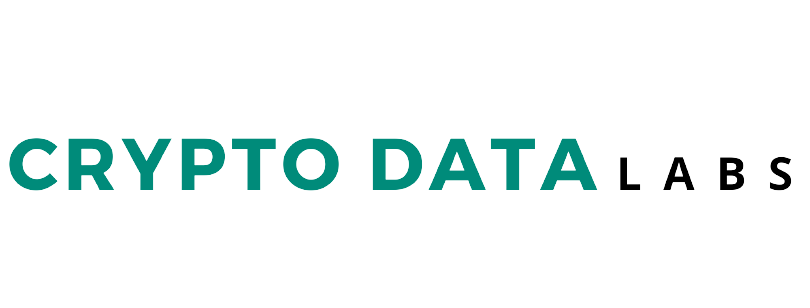Crypto Exchanges are the best way to buy and sell cryptocurrencies and other digital assets. Privately-owned platforms and cryptocurrency exchanges allow you to trade cryptocurrencies for digital assets such as fiat currencies or NFTs.
Types of Crypto Exchanges
Currently, we have two types of Crypto exchanges available to us
- Decentralized Crypto exchanges ( DEXs )
2. Centralized Crypto exchanges ( CEXs )
In this article, we will discuss Decentralized Crypto exchanges ( DEXs ) in detail.
What are Decentralized Crypto exchanges (DEXs)?
Decentralized exchanges, allow users to trade directly out of their wallets through interaction with smart contracts. Traders are responsible for protecting their funds and can lose them if they make mistakes like losing their private keys or sending funds to the wrong address.
A centralized exchange, on the other hand, offers services that can be compared with a bank. A bank protects the funds of its clients and offers security and surveillance services that individuals cannot provide. This makes it easier to move money around.
Because they are regulated entities, which custody funds for users and provide easy-to-use platforms to newcomers, centralized exchanges account for a large part of the cryptocurrency market trading volume. Some central exchanges offer insurance for deposited assets.
Customers’ assets or funds are issued an IOU (I owe You) through decentralized exchange portals. These can be traded freely on the network. An IOU, which is essentially a token based on blockchain technology, has the same value and the asset it represents.
Many popular decentralized exchanges were built on top blockchains that support smart contract support. They are built on top layer-one protocols which means that they can be directly built on the blockchain. The Ethereum blockchain is the foundation of most DEXs.
How do decentralized crypto exchanges( DEXs ) work?
It is important to understand the workings of decentralized exchanges by defining them. Decentralized exchanges (DEXs) differ from centralized crypto exchanges in that they combine the functionality of smart contracts. Blockchain networks are used to create decentralized exchanges. This is a powerful way to understand how crypto works. Smart contracts on blockchain networks allow users to keep their funds safe. Reflecting on the various types of DEXs can help you better understand how they work. Understanding the three types of DEXs can help you better understand their work.

Automated Market Makers
First, there are decentralized exchanges that use the AMM system. AMM uses smart contracts to solve liquidity concerns on crypto exchanges. AMM crypto exchanges were developed with the goal of executing trades on blockchain networks through token-holding contracts. Automated Market Makers rely on blockchain-based services, also known to obtain information from other platforms and exchanges in order to determine the market price for assets traded on their platform. AMMs are a significant departure from the decentralized exchange’s matching purchase and sell orders. Contrary to popular belief, smart contracts on decentralized exchanges use pre-funded assets pools, also known as liquidity pools.
Liquidity Pools
is a critical component of answers to the question “How does a DEX function?” Two crypto assets are included in the liquidity pools of AMM-based decentralized platforms. To become liquidity providers on the decentralized exchanges, users must deposit crypto assets in a similar amount to the pool. For all trades on the relevant pair, liquidity providers will receive a certain share of transaction fees. For liquidity mining to earn interest, liquidity providers must deposit the same value of each asset in each trading pair. Any transaction that involves more than one asset being deposited by the smart contract is rejected.
Because liquidity pools allow traders to execute orders and earn interest in an anonymous, trustless, and transparent way, they play a key role in a decentralized exchange operation. These trading pairs are ranked on AMM-based DEXs according to their total value locked (TVL), or the amount of smart contracts funds that have been locked.
Liquidity pools can be described as huge cash reserves that banks have to offer financial services to customers. The liquidity pools provide sufficient crypto assets to enable crypto traders to purchase, sell, and borrow. They don’t need to wait for another party matches their request to complete the transaction.
Order Book Decentralized crypto exchanges ( DEXs )
You don’t have to wait for others, order book DEXs is another way to work with decentralized exchanges. Order books allow you to compile all open orders for buying and selling assets for specific asset pairs. An order book model allows you to understand the workings of decentralized exchange by understanding the meanings of buy and sell orders. Buy orders are generally used to indicate that a trader is willing to buy or bid on a particular asset at a certain price. Sell orders, on the other hand, indicate that a trader wants to sell a certain asset at a given price.
Order book DEXs can be used to determine the order book depth by comparing the buy and sell orders. The market price for specific assets on an exchange is also determined by the order book’s depth. You will be surprised to learn that there are two types order book DEXs.
There are two types of order book DEXs: on-chain and off-chain. The order book DEXs store information on open orders on the blockchain and deposit funds into the users’ wallets. These exchanges can be used by traders to borrow funds from lenders and increase their trading potential. Off-chain order books, on the other hand, store order books from the Blockchain.These exchanges make it easier to trade on blockchain, while reducing costs and increasing speeds.
Decentralized exchange ( DEX ) Aggregators
This last category of decentralized exchanges provides valuable insights into how decentralized exchanges actually work. In how they operate, aggregators are very different from AMM-based and order book DEXs. Different protocols and mechanisms are used by DEX aggregators to resolve liquidity issues. These platforms can be used to openly support the aggregation liquidity from multiple DEXs, which will reduce slippage issues on large orders. DEX aggregators can also optimize token prices and charge swap fees, as well as provide quick price estimates to traders. Aggregators also protect users from the negative effects of the pricing effect and reduce the risk of unsuccessful transactions.
How to use decentralized crypto exchanges ( DEX )
A decentralized exchange doesn’t require you to sign up. You don’t even need an email address in order to interact with them. Instead, traders will require a wallet that is compatible with smart contracts. Anybody with an internet connection and a smartphone can access the financial services provided by DEXs.
Step: 1
The first step in using DEXs is to choose the network [Like Ethereum or BNB etc ]that the user would like to use. Each trade will result in a transaction fee.
Step: 2
Next, choose a wallet [ For example Metamask wallet for Ethereum blockchain ] that is compatible with the chosen network and fund it using its native token. A native token is a token that can be used to pay transaction fees within a network.
The wallet extensions allow users to access funds in their browsers. This makes it easy to interact and use decentralized apps (DApps), such as DEXs. They can be installed just like any other extension. Users will need to import an existing wallet using a seed phrase or private key or create a brand-new one. Password protection further protects your security.
These wallets might also include mobile apps so that traders can access Defi protocols while on the move. By importing funds from one device to another, users can sync wallets.
Once you have chosen a wallet, the wallet will need to be funded using the tokens that are used to pay transaction fees on the selected network. These tokens must be purchased on centralized exchanges. They can be easily identified by the ticker symbol, ETH to identify Ethereum. Users can withdraw the tokens to their wallets after purchasing them.
It is important to not transfer funds to the wrong network. Users must ensure that they withdraw funds to the correct network. Users can connect to a funded wallet by clicking the “Connect Wallet” button in the upper corner of the DEXs website.
Advantages of using a Decentralized crypto exchange ( DEX )
Decentralized exchange trading can be costly, especially when network transaction fees are high when trades are executed. However, DEX platforms offer many benefits.
Token availability
Centralized exchanges must vet tokens individually and ensure that they conform to local regulations before listing them. The blockchain-based decentralized exchanges can accept any token that has been created on it. This means that new projects may list on them before they become available on their centralized counterparts.
This can allow traders to get in on projects as soon as possible, but it also means that scams of all kinds are listed on DEXs. One common scam is the “rug pull,” which is a typical exit scam. Rug pulls are when the team behind a project dumps tokens that provide liquidity on these exchanges’ pool when they go up in price, making it impossible to sell other trades.
Anonymity
Users can exchange cryptocurrency for another on DEXs, and their anonymity will be preserved. Users do not have to go through Know Your Customer (KYC) as a standard identification process, unlike centralized exchanges. KYC processes collect personal information about traders, including their legal name and a photo of their government-issued ID document. DEXs are popular because they attract many people who don’t want to be identified.
Fewer Security risks
Because these exchanges don’t control the funds, experienced cryptocurrency users can reduce their risk of being hacked. Instead, traders keep their funds safe and only use the exchange to interact with them when necessary. Only liquidity providers are at risk if the platform is hacked.
Lower counterparty risk
Counterparty risk is when one party in a transaction fails to fulfill its obligations or doesn’t perform its part. This risk is eliminated because decentralized exchanges are free from intermediaries and based on smart contract technology.
Users can perform a quick web search to determine if smart contracts on the exchange have been audited. They can also make decisions based on other traders’ experiences.
Disadvantages of using Decentralized crypto exchanges ( DEXs )
Decentralized exchanges have many drawbacks.
You will need to have specific knowledge
You can access DEXs using cryptocurrency wallets that are compatible with smart contracts. Users must not only know how to use these wallets but also understand the security concepts that are involved in keeping their funds safe.
These wallets must be funded with the right tokens for each network. Other funds could get stuck if the native token of a network is not used. The trader will have to pay the fee to move them. To fund a wallet with the right tokens and choose the right wallet, you need to have specific knowledge.
Slippage can also be difficult for even experienced investors. It is even more difficult when buying tokens with lower liquidity. Slippage tolerances on DEX platforms often have to be manually adjusted in order to allow for orders. Slippage adjustment can also be complicated and not all users will understand it.
Trading can be dangerous without the right knowledge. There are many things that could go wrong, including withdrawing coins to the wrong network or paying transaction fees too high and losing money permanently.
Smart contract vulnerabilities
Smart contracts for blockchains such as Ethereum are openly available. Anyone can view their code. Smart contracts on large, decentralized exchanges can be viewed by anyone who is interested.
Human nature allows us to err. Exploitable bugs may still get past code reviews and audits. Even worse, auditors may not be able to see potential exploits that could cost liquidity providers their tokens.
Listings of unvetted tokens
Anyone can list a token on a decentralized exchange. They can also pair it with other coins to provide liquidity. Investors can fall for scams like rug pulls, which make them believe they are purchasing a different token.
These risks are countered by some DEXs asking users to verify that the smart contracts of the tokens they want to purchase have been verified. This solution is great for those with previous knowledge, but it can also be used by novice users.
Traders can read the whitepaper, join its community on social media, and look for audits about the token before buying. This helps to avoid scams that take advantage of innocent users.
Top 10 Decentralized crypto exchanges (DEXs)
Below are the highest-ranked DEXs as per traffic, Liquidity, and Trading Volumes.
- Uniswap – V3
- DODO
- Pancakeswap – V2
- Curve [ Ethereum ]
- Uniswap [ Polygon ]
- Kwenta
- Uniswap – V2
- Balancer
- Uniswap [ Optimism ]
- Shibaswap
Conclusion
Although the first decentralized exchanges were created in 2014, they only gained popularity as decentralized financial services built upon blockchain gained traction. AMM technology also helped to solve liquidity problems that DEXs had previously encountered.
These platforms have difficulty enforcing Anti-Money Laundering and Know Your Customer checks because there is no central entity that verifies the information submitted to them. These checks may be implemented on decentralized platforms by regulators.
However, DEXs are not subject to the same regulations as custodians. However, platforms that accept deposits from users will still require them to sign messages on the blockchain in order to transfer funds to their platforms.
Note: This is not financial advice. This how-to article is for educational purposes only. Please note that cryptocurrency is a highly volatile asset class; only invest what you can afford to lose.


